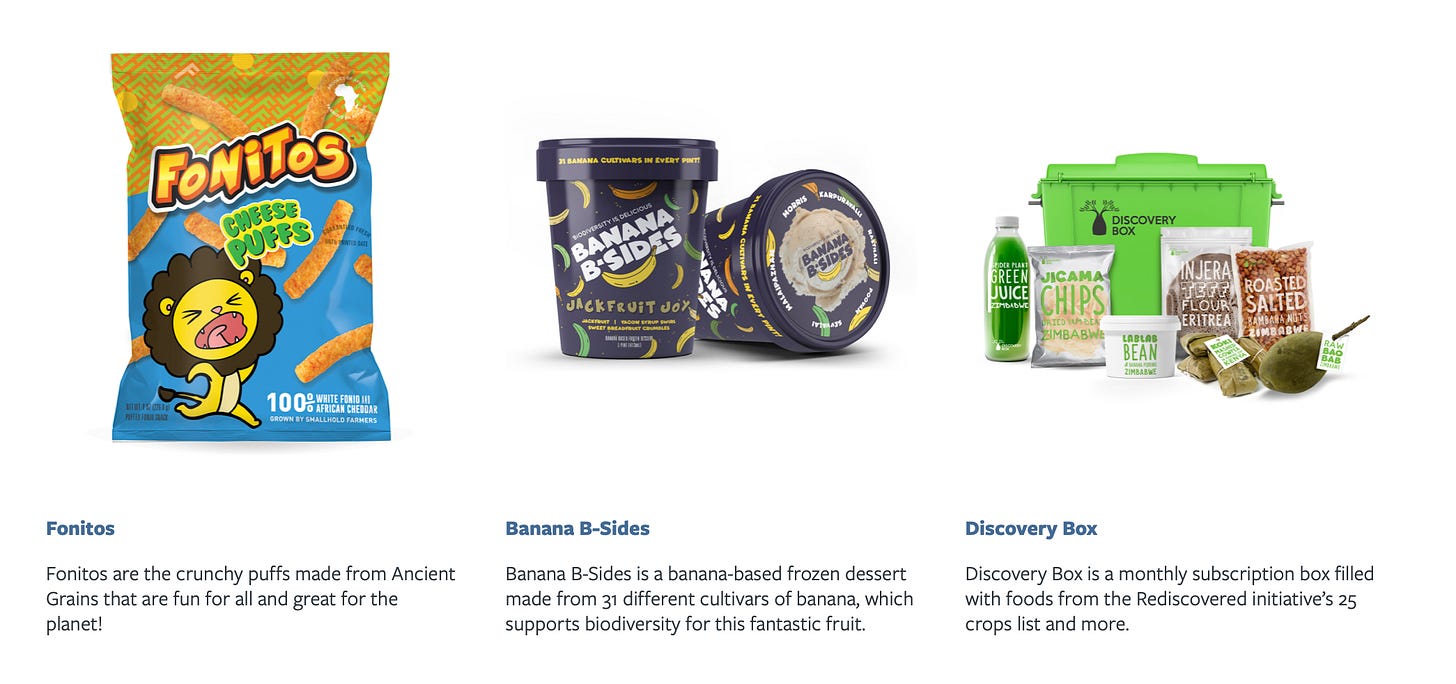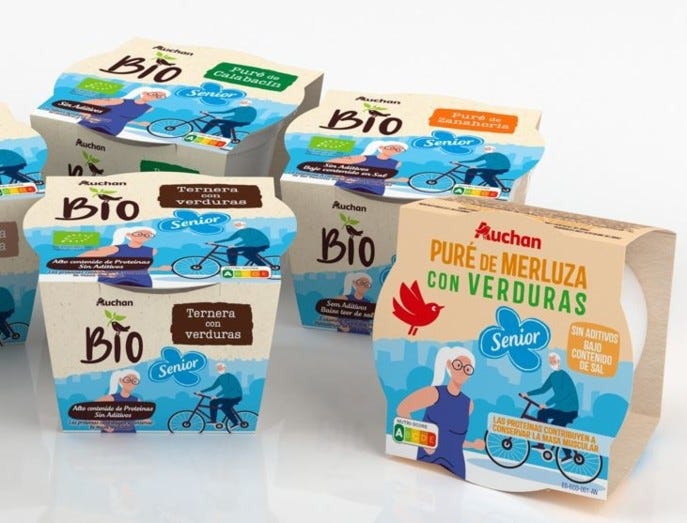Ever heard of the butterfly or domino phenomenon? The captivating notion that a single flutter of wings can set off a cascade of events. In this spirit, let's delve into the macro-trends transforming our eating habits. An aging population, climate change, the rise of technology and AI — how do these factors shape our plates? Here's some food for thought to savor freely!
A Case for Biodiversity
Climate change is prompting us to reexamine our food production systems. Regenerative agriculture, centered on planet-friendly practices, emerges as a response. This approach champions biodiversity through crop rotation, polyculture, and agroforestry, all of which enhance plant diversity. The urgency is clear: The FAO reports that, of the 250,000 to 300,000 plant species available, only 150 to 200 make it onto our plates. More strikingly, three grains—rice, corn, and wheat—account for nearly 60% of our calorie and plant protein intake.
In this setting, I believe we'll witness the ascent of previously underappreciated foods. Consider Kernza, a plant that produces grains and fodder for several years without the need for reseeding. Its permanent ground cover, hardiness, and extensive root system position it as an environmental ally. Another noteworthy example is fonio, an ancient African cereal known for its drought resistance and adaptability to poor soils. Foods like these could be pivotal in shifting our food system towards sustainability and resilience.
In the world of branding, promoting biodiversity may emerge as a compelling marketing approach. By advocating for endangered species vital to our ecosystems, brands find a unique and impactful way to differentiate themselves. The work of expert Mike Lee exemplifies this opportunity. On his website, Lee features "concept products" that champion biodiversity. Among them are the chips "Les Fonitos," made from ancient grains. In a similar vein, the ice cream "Banana B-Sides" uses 31 different banana varieties, presenting an alternative to the dominance of the Cavendish. Notably, among over 1,000 banana varieties, the Cavendish alone represents 90% of exports. It's time to diversify our choices and invite biodiversity to our plates.
Boomer Boom
In the West, the population is aging rapidly, with France experiencing a particularly pronounced increase. There, between 2020 and 2030, the population of those aged 75 to 84 is projected to soar from 4.1 million to 6.1 million, a staggering 49% rise. These seniors, who embody the rebellious spirit of the Beatles generation, have expectations that diverge from those of their predecessors.
This shift is evident in their dietary choices. Gone are the days of unappealing and bland oral nutritional supplements (ONS). Challenges with swallowing, chewing, and malnutrition necessitate a culinary revolution designed for seniors.
Clinical nutrition giants in France such as Nutricia Clinical Nutrition, Lactalis Nutrition Santé, and Nestlé Health Science will soon face new challengers. Auchan, a major retail chain known for its hypermarkets, has taken the lead in Spain by launching an innovative range of adult food jars. Meanwhile, emerging local brands like AMA (Aller Mieux Autrement) madeleines and La Picorée are targeting malnutrition with less medicalized and tastier products — calorically rich and nutritious delights.
Food is Social
Cuisine has always been an inherently social experience, and its presence has been amplified over the years thanks to social media. However, TikTok has brought a new dynamic to this phenomenon. The platform has become a real hotspot for culinary trends. As Alicia Kennedy points out in a Vox article, gastronomic innovation is no longer confined to the offices of media giants like Condé Nast. It now emerges from neighborhood kitchens. The rise of Tikene Younger is a shining example. With her 3.7 million followers on TikTok, she far surpasses the New York Times Cooking section, which has 320,000 subscribers, and Bon Appétit, with just under 316,000.
Moreover, while social media is flooded with culinary trends that play on the playful and fusion aspects - such as hibiscus red teas, blue Caribbean infusions made from sweet peas, glamorous canned fish, or shaved fruits (a trend you can discover here if you're new), online gastronomic content is increasingly taking a more cultural and emotional turn.
Rosie Grant's TikTok account (with 8 million likes!) perfectly illustrates this dynamic. She features "gravestone recipes," recipes inscribed on tombstones by people wanting to leave a trace of their culinary talent. These recipes, ranging from cookies to fudge, are recreated and shared by cooking and history enthusiasts on social media, helping to keep the memory of the deceased alive through their culinary skills.
This phenomenon is just one manifestation of how food is staking its claim on the cultural stage. It underscores the power of social media to keep culinary traditions alive and to create intergenerational bonds through food and culture, sometimes in the most unexpected ways.
A taste of AI
The intersection of generative AI and the culinary arts, a timeless discipline that appeals to our senses, holds intriguing yet complex potential. While tools like ChatGPT can generate recipes, they often struggle to capture the nuance required to balance flavors, textures, and cooking techniques that distinguish an outstanding dish. Intuition and context, so vital in cooking, remain elusive for AI. Chefs have an inherent sensibility for ingredients and techniques, cultivated by a rich heritage of culinary traditions and recipes.
A recent example from France underscores this dynamic: in the creation of a wine blend, AI played a role in assembling the grape varietals, but human collaboration was crucial. French vintners emphasize that nothing can compare to the human sensory assessment of wine, capable of detecting subtle nuances that technology cannot grasp. Even ChatGPT, aware of its limitations, acknowledges, "I am a language model, devoid of taste or smell, and thus cannot evaluate wine.”
In light of this, it makes sense to champion a collaborative approach where AI and humans work together, a promising arrangement for multiple applications. AI chatbots can provide creative suggestions for adapting recipes to dietary restrictions, available ingredients, and individual preferences. AI can also bring a spark of originality by proposing variations of traditional dishes, accelerating recipe development for chefs and culinary TikTokers, or serving as an educational resource for culinary students. Additionally, AI chatbots can assist with meal planning, create shopping lists, and guide users through each step of culinary preparation. AI-generated recipes can explore intercultural culinary fusions, and AI can be deployed for culinary research and experimentation, identifying unique ingredient pairings and suggesting culinary challenges to enrich users' culinary repertoires.
So many other factors are reshaping our plates. For instance, urbanization is altering food preferences, particularly in regions like Africa. As the middle class grows and cities expand, people are increasingly adopting Western-style diets that include more animal-sourced foods. Meanwhile, younger generations are bringing their own preferences to the table, with a significant shift towards snacking and even the addition of a fourth meal - late-night food. Our eating habits are undeniably changing, much like the subtle ripple effects set in motion by the flapping wings of a butterfly. As we reflect on the implications of these changes, the essential question remains: Are all of these trends leading us toward a better future?
MD
NB: If you find this topic intriguing, I've written another piece on the future of food, featuring insights from some of the food experts I greatly admire. You can read it here.





